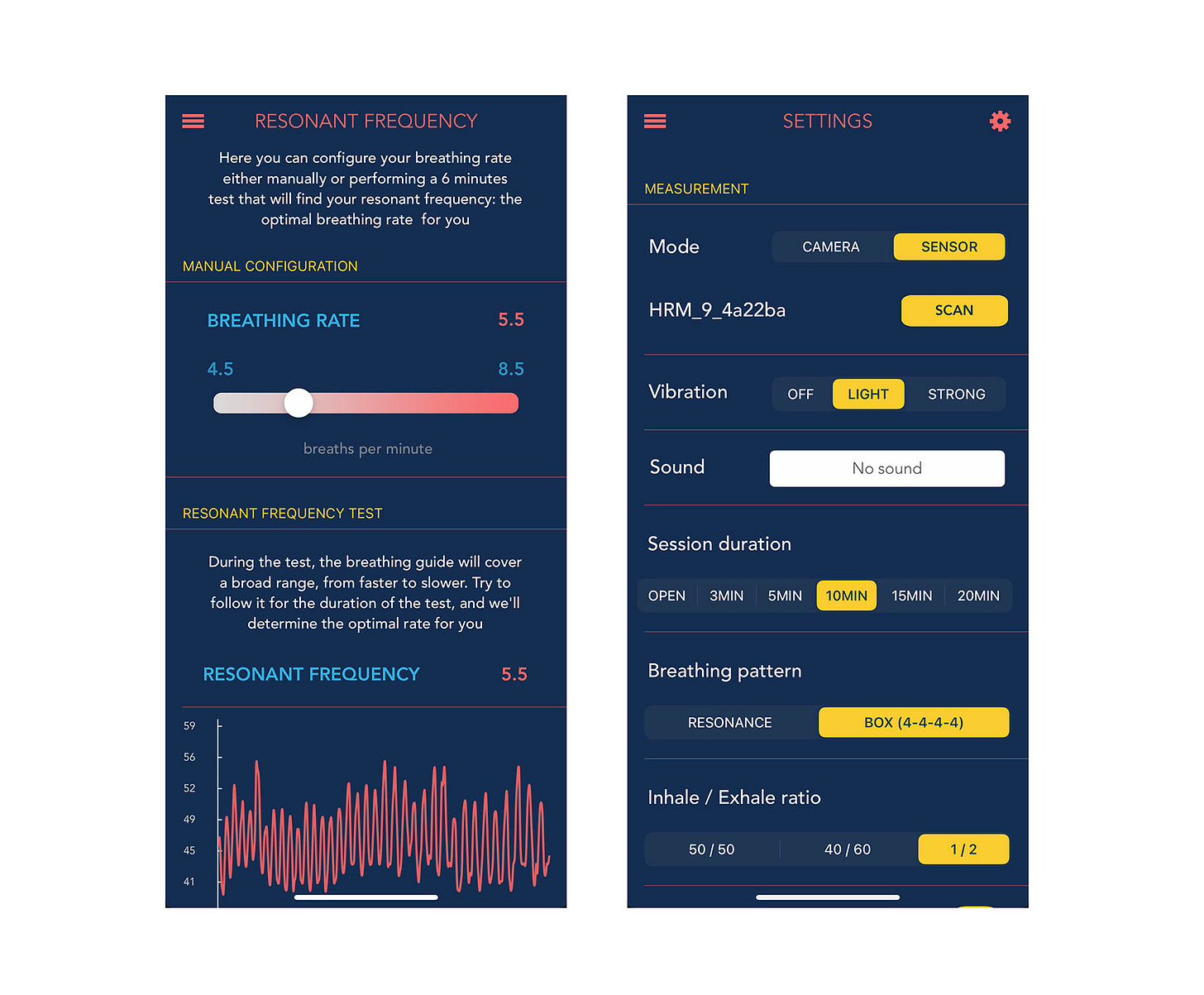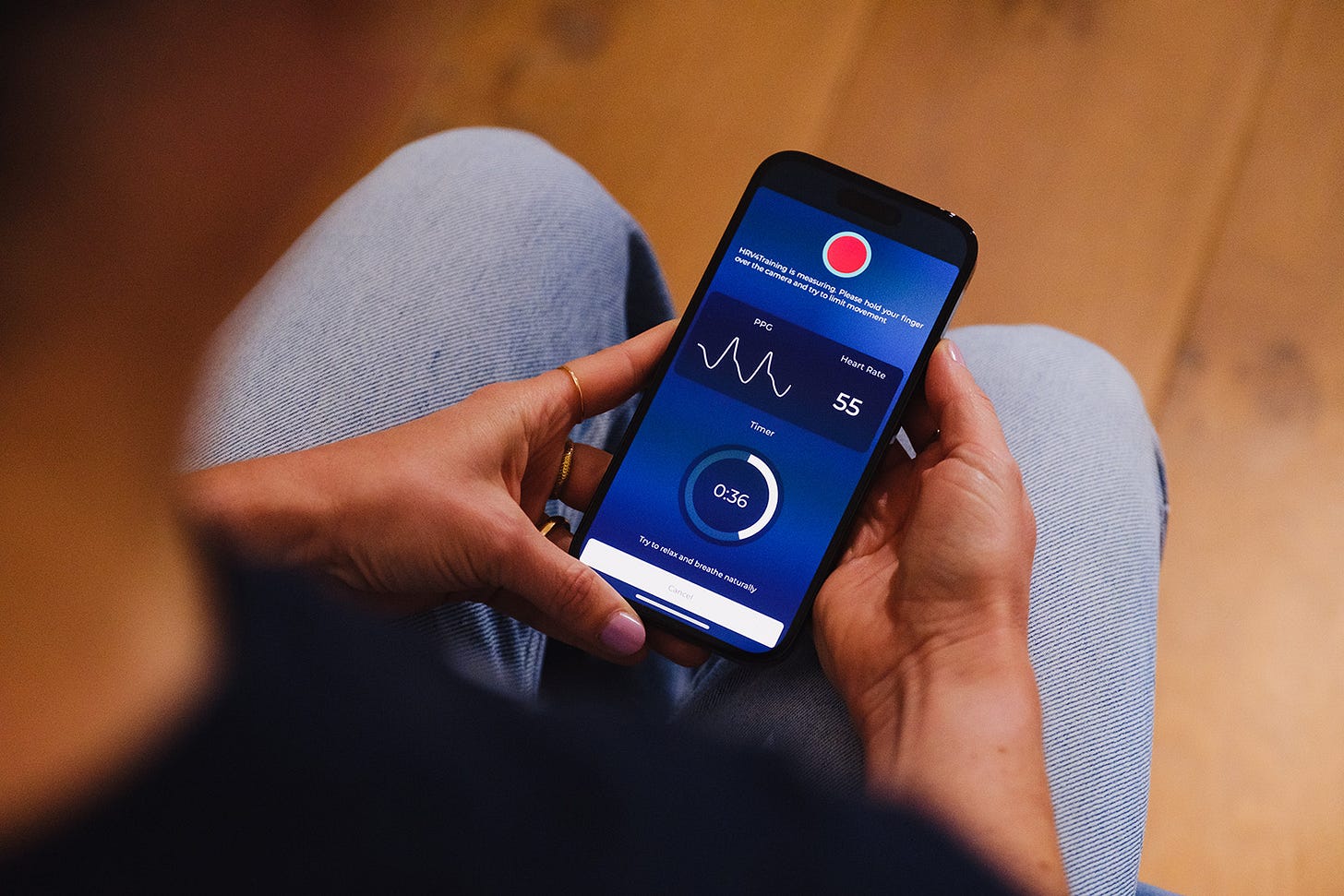Pranayama Protocols: Yogic Respiration (Resonant Frequency) and Chatushkona (Box Breathing)
HRV4Biofeedback app update and a bit of background
Recently, I’ve been practicing a few Pranayama breathing techniques. My interest in pranayama has been revived by Alessandra, who is in her second year of yoga teacher training and is writing a thesis on breathing techniques (something else we will offer in the future at The Brisighella Lab).
Alessandra has been using HRV4Biofeedback to collect data during different protocols, and this time around, she recruited me to be part of her experiment. The practice led to the implementation of box breathing in the HRV4Biofeedback app, which you can find in the latest version of the app:
This post connects the yogic tradition with what we measure in practice, and how our biofeedback app now supports both yogic respiration (resonance breathing) and chatushkona (“box” breathing), with the usual subjective questionnaires and tags so you can track how each session actually feels. Keep in mind that despite today’s madness around optimizing metrics and HRV, these practices have proven effective in lowering anxiety, depression, and improving sleep quality, regardless of any chronic physiological changes.
Is your goal to improve your health and performance, or is your goal to get a higher made-up score from a wearable? To each their own, of course.
Pranayama, HRV, and Picking the Right Breath for the Job
Pranayama appears in classical yoga texts as the regulation of the breath to steady the mind. Two patterns relevant here are yogic respiration, an equal-ratio breath that in modern practice often coincides with “resonance” breathing (~0.1 Hz, ~6 breaths per minute), and chatushkona, the “four-corner” breath—inhale, hold, exhale, hold—in equal lengths, typically 4 seconds each, also re-branded as box breathing. The former emphasizes continuity; the latter, discrete phases with retentions.
Yogic respiration or resonance breathing
Physiologically, resonance breathing is interesting because it aligns the respiratory cycle with cardiovascular reflex loops. At around 6 breaths per minute, many people show a peak in respiratory sinus arrhythmia and a stronger baroreflex; in plain terms, heart rate swings synchronize with the breath, and HRV increases to its maximum, acutely. Similarly, blood pressure is typically reduced during practice.
This does not mean you are “more recovered” or that there will be any chronic effect, but it can be a useful down-regulation tool.
Chatushkona or box breathing
Chatushkona behaves differently. The retentions demand attention and CO₂ tolerance, and the transitions act like set points that keep the mind engaged.
HRV is unlikely to increase as much (due to the holds), yet the practice can still be valuable because it adds cognitive control to the autonomic picture. Many athletes and performers use box breathing to contain arousal before a task: not relaxation, but what we could call readiness.
Subjectively, people report fewer intrusive thoughts during the sets, less mind wandering, and a clearer “I’m in charge” feeling, which is a different outcome than the more relaxed state you get from resonance practice, where the mind might also wander more.

When to use them
From a practical standpoint, I’d use resonance when the objective is relaxation, recovery, or sleep preparation. Ten minutes at your personal resonant frequency (discovered by exploring the range around 6 breaths per minute, something the HRV4Biofeedback app can do for you) often yields a more relaxed state (and higher HRV, acutely), hence a drop in perceived stress. Chatushkona fits moments that require stress control rather than relaxation: before a race, a presentation, or any situation where you need a contained, attentive state. Use chatushkona to practice attention under a mild load.
As mentioned above, the psychological effects are not limited to what we see in HRV. Structured breathing reduces anxiety symptoms and improves sleep quality in many people. That’s why we always pair physiology with subjective data.
With the latest update of HRV4Biofeedback, you can use both resonant-frequency sessions and box-breathing sessions; then log how you feel, and over a few weeks, you’ll see which protocol is functionally effective for you in specific situations.
I hope you’ll find this new feature useful, and thank you for your support.
If you use HRV4Training and HRV4Biofeedback, we have recently released an update of the HRV4Training Pro website which allows you to visualize time spent practicing breathing exercises with the HRV4Biofeedback app, in relation to your morning resting physiology collected with HRV4Training.
To recap, here is how I use the apps:
HRV4Training: morning HRV measurement, while seated (see reasons behind this protocol here) + analysis with respect to my normal range to assess my response to acute and chronic stressors (see article above about how to use this data in the context of managing training load).
HRV4Biofeedback: slow breathing exercises, which could possibly impact recovery, e.g. by quickening a return to normal in terms of nervous system activity after high-intensity exercise, apart from the various benefits that have been shown in the scientific literature (e.g. reduced anxiety, better sleep, etc.). While I measure with the iPhone camera in HRV4Training for my morning assessment (see data and validation here), I prefer to use a Polar H10 for longer, biofeedback sessions.
Please see my other articles below if you are new to biofeedback and interested in learning more:
Thank you for reading!
Personal Coaching for Runners
If you are interested in working with me, please learn more here, and fill in the athlete intake form, here.
How to Show Your Support
No paywalls here. All my content is and will remain free.
As a HRV4Training user, the best way to help is to sign up for HRV4Training Pro.
Thank you for supporting my work.
Marco holds a PhD cum laude in applied machine learning, a M.Sc. cum laude in computer science engineering, and a M.Sc. cum laude in human movement sciences and high-performance coaching. He is a certified ultrarunning coach.
Marco has published more than 50 papers and patents at the intersection between physiology, health, technology, and human performance.
He is co-founder of HRV4Training, advisor at Oura, guest lecturer at VU Amsterdam, and editor for IEEE Pervasive Computing Magazine. He loves running.
Social:
Personal Substack
Strava
Instagram






How can you connect those two apps for sharing Biofeedback sessions - does it have to be the same account? Nice feature btw.!